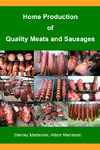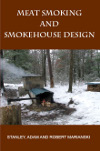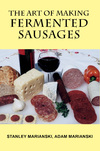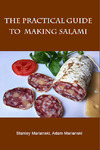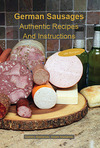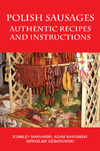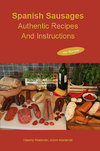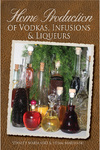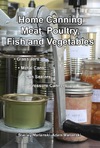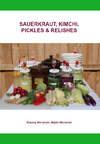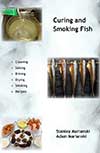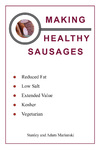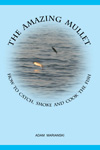Meats and Sausages
Botulism
Botulism, once known as a sausage disease, is a rare but serious food-borne disease that can be fatal. The symptoms of botulism include difficulty swallowing, talking, breathing, and double vision. Without medical care, respiratory failure and death are likely. Botulism symptoms typically appear within 18 to 36 hours of eating the contaminated food, although it can be as soon as four hours and last up to eight days. There are three main kinds of botulism. Food-borne botulism is caused by eating foods that contain the botulism toxin. Wound botulism is caused by a toxin from a wound infected with Clostridium botulinum.
Because Cl.botulinum hates oxygen;, the air in soil and water threatens them. When threatened Cl.botulinum bacteria envelop themselves within a protective shell, like a cocoon. They don't multiply; they just patiently remain inside, waiting for more favorable conditions. Similarly to plant seeds, they can survive harmlessly in soil and water for many years. Then, when the opportunity arises, they emerge from their shells and become vegetative bacteria (actively growing). During this growing stage, they produce toxins. It is the toxin that kills, not the bacteria. Where most bacteria can be killed at 160° F (72° C), Cl. botulinum is protected inside the spore and will survive the temperature of boiling water (212° F, 100° C) for 5 hours. Processing meat for so long will produce poor texture, flavor, and color. For this reason, low-acid foods such as meat, poultry, fish, and vegetables must be processed in a pressure canner at 240° F (116° C) as this temperature will kill botulinum spores in about 2 minutes. If spores are not completely killed in canned foods, vegetative microorganisms will grow from the spores as soon as conditions are favorable again.
History
Since the dawn of civilization, man has dealt with food poisoning. It has led to a number of deaths, but in most cases, it was blamed on natural causes. The doctor would sign a death certificate saying " it was his time, or God's will." Very few historical source documents exist on the subject before the 19th century. In the 10th century Emperor Leo VI of Byzantium prohibited the manufacturing of blood sausage. At the end of the 18th century, there were documented outbreaks of “sausage poisoning” in Wurttemberg, Southern Germany. The biggest one occurred in 1793 in Wildbad where 13 people became ill (6 of whom died) after eating a locally produced blood sausage.
The above incident motivated the German poet and district medical officer Justinus Kerner (1786-1862) to investigate the problem. Although he failed to discover the bacteria that caused food poisoning, he was the first to publish detailed and complete descriptions of food poisoning between 1817 –1822. He described 230 cases, most of which were linked to the consumption of sausages. He called it “sausage” or “fatty” poison. The illness first became known as “Kerner’s disease”, Kerner being the man who signed the death certificates of those who ate contaminated sausage. In time it became known as "botulism" after "botulus", the Latin word for sausage.
Eighty years after Kerner's work, in 1895, a botulism outbreak affected 34 people. After a funeral dinner in the small Belgian village of Ellezelles, a group of local musicians consumed smoked ham. That led to the discovery of the pathogen Clostridium botulinum by Emile Pierre van Ermengem, professor of bacteriology at the University of Ghent who investigated the incident. Van Ermengen discovered that botulism was intoxication, not infection, and that the toxin was produced by a spore-forming obligate anaerobic bacterium, “Clostridium botulinum.”
Where Does Botulism Come From?
C. botulinum is found in soil and aquatic sediments all over the world. Like plant seeds, they can lie dormant for years. They are harmless until they encounter an adequate environment for growth. To grow, these bacteria require a slightly acidic, oxygen-free environment that is warm and moist. That is exactly what happens when smoking meats:
- First of all, meats contain a lot of moisture. Water is then also added to sausages to facilitate stuffing. Hams and other meats are pumped up with water.
- Lack of oxygen – when smoking, we intentionally decrease the amount of available air. This allows our sawdust or wood chips to generate smoke.
- Temperatures between 40° and 140° F - most smoking is done at this temperature range. The most dangerous range is from 78-95° F (26-35° C), and that fits into the “warm smoking” method. Bacteria thrive at this temperature range. It looks like we have created ideal conditions for botulin toxin. Clearly, we have to come up with a solution.
How is it treated?
If discovered early, a doctor may try to remove contaminated food still in the digestive system by inducing vomiting o applying enemas. If discovered late, it can lead to paralysis, respiratory failure, and even death. It may also be necessary to place a patient on a breathing machine for weeks. Adults with botulism are treated with an antitoxin derived from horse serum that the Centers for Disease Control and Prevention distribute. Aside from antitoxin, no drugs are used to treat botulism. Antibiotics are not effective in preventing or treating botulism.
Statistics
Experts estimate that up to 90% of U.S. food-borne botulism cases can be traced to eating contaminated home-preserved food. Between 1975-1992, 543 people fell victim to food-borne botulism in the United States and Puerto Rico. In the early 1900s, 71% of botulism victims died, but with early diagnosis and advanced treatment, the fatality rate had dropped to 7.5 % by 1984 and fewer than 2% by 1993.
In the United States, an average of 110 cases of botulism are reported every year. Approximately 25% are foodborne, 72% are infant botulism, and the rest are wound botulism. Outbreaks of food-borne botulism involving two or more persons are the most frequent and are usually caused by eating contaminated home-canned foods. The number of cases of foodborne and infant botulism has changed little in recent years, but wound botulism has increased because of the widespread use of drugs.
Worldwide, there are about 1000 cases of botulism each year. The probability of death is high if not treated immediately. Botulinum toxin has no odor or taste, so the wisest advice is to discard any suspicious food. Botulism often occurs when contaminated foods, such as canned meats or preserved foods, are improperly stored at home. Always discard bulbing or rancid food. A dented can can develop an air leak to allow bacteria to grow. All home-canned foods should be boiled for 20 minutes before serving to eliminate any botulism spores. Home canning should follow strict hygienic recommendations to reduce risks. Food that has been improperly preserved or stored can harbor botulinum toxin-producing clostridia. Pressure canners should be used for all low-acid foods. In addition, home-canned foods should be boiled for 20 minutes before eating. Botulism spores can only be killed by the high temperatures produced by a pressure canner. The toxin (that is produced in anaerobic conditions) can only be destroyed when boiled. All smoked meats and sausages, when smoked at low temperatures, should contain sodium nitrite
Botulism and Sausages
Sausages are the second biggest source of food contamination and poisoning, second only to home-canned food products. Ground and moist meat is held inside the sausage and given proper conditions, can lead to poisoning. Without proper development conditions, C. botulinum bacteria lay low in a spore form and can remain dormant for years. To grow, these bacteria require a slightly acidic, oxygen-free environment that is warm (40°-120°F) and moist, which is exactly what happens when we smoke meats.
Let’s follow a beautifully presented scenario on stuffing a turkey from the 1984 classic: “The Great Sausage Recipes and Meat Curing” by Rytek Kutas.
“The well-intentioned cook decides to make the dressing for the turkey the night before. This gives her more time to do many other important things the next day. She stuffs the turkey the night before, and places it in the refrigerator to be cooked the next day.
Unfortunately, she doesn’t know she is creating ideal conditions for food poisoning. Obviously, the stuffing that she put into the turkey is somewhere between 40° and 140° F. Because the various parts of dressing have some sort of liquid in them, the moisture is also there. Lastly, she sews up the turkey to create a lack of oxygen in its cavity”.
It is that simple to create food poisoning. All you need is a temperature of 40°-140° F, moisture, and lack of oxygen, and a beautiful Thanksgiving turkey dinner can become a disaster.
How to Prevent Botulism
The answer lies in the use of Nitrates/nitrites. When present, they prevent the transformation of C. botulinum spores into toxins. It is almost like applying a vaccine to eliminate a disease. By curing meats with nitrites, we protect ourselves from possibly contracting a deadly disease. Nitrites are cheap, commonly available, and completely safe in amounts recommended by the Food and Drug Administration. So why not use them? All commercial plants do. Nitrites are needed only when smoking meats or making fermented sausages. You don’t need nitrites when barbecuing or grilling, as the temperatures are high enough to inhibit the development of botulinum spores into toxins.


